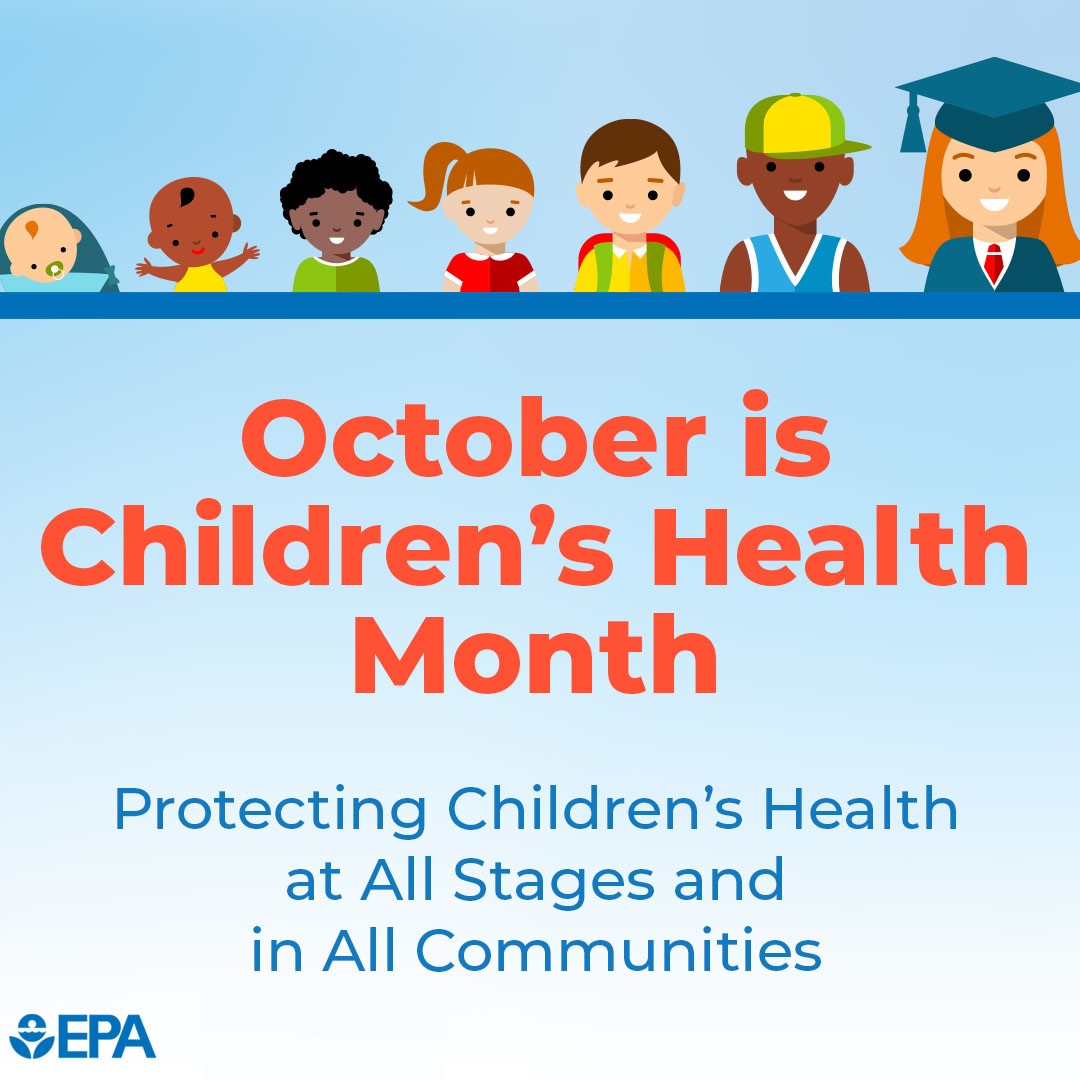Sep
29

Posted by fsteele on September 29th, 2025
Posted in: Uncategorized
Exercise, healthy foods, clean air and water are essential for young minds and bodies. 
October 8, 2025 is National Walk & Roll to School Day
A study published in the journal, Nature, this month, highlights the importance of a built environment that encourages physical activity (Althoff, 2025). National Walk & Roll to School Day encourages communities to make it safe for children to walk, bike, and roll to school. According to the National Center for Safe Routes to School, walkable communities contribute to safer streets, improved accessibility, increased community connection and reduced traffic and pollution. In addition to the built environment, exposures to toxins and extreme weather events also affect the health outcomes of children.
October 9, 2025 is Children’s Environmental Health Day.
Approximately 1 in 4 children between the ages of 2-8 in the US are living with chronic illness, such as asthma, childhood cancer, or diabetes. In addition, about 1 in 5 children in the country have learning and attention problems. Early exposure to environmental risks–such as from air pollutants, lead in paint and drinking water, forever chemicals (PFAS), and pesticides–contribute to the increasing incidences of these conditions, and climate change multiplies these risks. In fact, children under the age of 5 bear 88% of the global disease burden resulting from climate change. Experts estimate that a child born today will experience 2-7 times the number of climate-related extreme weather and disasters during their lifetime as someone born in 1960. Many young people who have lost homes, schools, friends and family, or who have been displaced, suffer from PTSD, anxiety, and depression. Moreover, many children and adolescents are experiencing existential despair and anxiety because of the uncertainty climate change poses to their future and present circumstances.
We need to offer robust platforms, resources, and opportunities for positive action to our communities and our youth. Educating, empowering, and engaging the next generation of environmental stewards helps to protect children’s health as well as that of the planet. It builds agency and connectedness, and it improves mental health. As critical community hubs and centers of teaching and learning, information distribution, discovery, and connection, libraries are uniquely poised to do just that. Are you feeling inspired? Check out the Children’s Environmental Health (CEH) Day library action guide and other resources to provide tips and ideas for hosting activities and raising awareness. These activities could include age-appropriate eco-book reading events with children, CEH Day art contests, and more.
This writeup is adapted from a post contributed by
Kristie Trousdale, MPH, Deputy Director of the Children’s Environmental Health Network in April 2025.
References and Resources
Althoff, T., Ivanovic, B., King, A. C., Hicks, J. L., Delp, S. L., & Leskovec, J. (2025). Countrywide natural experiment links built environment to physical activity. Nature, 645(8080), 407–413. https://doi.org/10.1038/s41586-025-09321-3
National Center for Safe Routes to School. (n.d.). Walk Bike & Roll to School. https://www.walkbiketoschool.org/learn-more/why-walkbike/
Children’s Environmental Health Network
National Institute of Environmental Health Services (NIEHS): Children’s Environmental Health
NIEHS Children’s Environmental Health Fact Sheet
Pedestrian and Bicycle Information Center
Region One Insights Plan Now for Children’s Environmental Health Day
Re-Envisioning School Streets: Creating More Space for Children and Families
Trousdale, K., McCurdy, L. E., Witherspoon, N. O., & Alkon, A. (2025). Protecting Children’s Environmental Health in a Changing Climate: A Model Collaboration of the Maternal and Child Health Section and the Environment Section of APHA. Maternal and Child Health Journal, 29(8), 1192–1198. https://doi.org/10.1007/s10995-023-03756-8